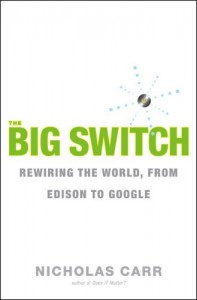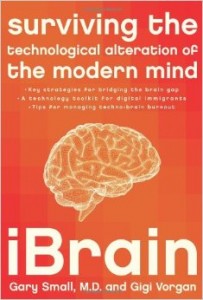
The first sexual revolution was about having sex. The second is about removing the vulnerability from sex.
And that brings us to the topic of this final article in my ongoing series about marriage between humans and robots.
We can begin to understand our imminent psychological readiness to begin marrying our machines when we appreciate how the rise in technologically-mediated relationships has been orienting us to look upon vulnerability as something to be avoided at all costs. We will see that through online interactions we have been primed for the type of disembodied and narcissistic relationships necessary for marriage to robots to seem normal. Indeed, as our digital networks continue to weaken our emotional intelligence, sociable robots may soon answer the need of our narcissistic moment.
Disembodied Relationships and the Rise of Social Narcissism
I have argued elsewhere that liberation from embodiment is a prevailing theme in Western society. One of the places this emerges is in the activity that has popularly been termed sexting.” In teenage magazines “sexting” is heralded as a way to navigate around these difficult aspects of being human while preserving a shell of sexual intimacy. After all, sexting enables a girl to experience the excitement of giving her body to a man without ever having to do business with him as an embodied person, without having to approach him in all her vulnerability, fragility and humanness. Though it may seem odd, for many women, this is precisely the appeal of sexting. Sexting is thus seen as liberating sex from the problem that has dogged it from the beginning, namely having to deal with real people. An article in Sans Magazine was exuberant about sexting’s potential to free sexual relationships from the constraints that come with physical presence: “No longer do we actually have to commit to a single task of actually physically undressing, warming up our partner and then engaging in the carnal act of intercourse…. Plus, we don’t ever have to actually see the person.” Notice that the subtext of these types of statements is that our humanness – even our embodiment in time and space – represents a type of “fall” from which technology can redeem us.

When Groothuis wrote his book the majority of online interaction was still occurring through mechanisms such as websites, emails or clunky chat boards that you had to have the right software to operate. The social aspect was an important component within the overall matrix of online activity, but it wasn’t the whole picture. What has happened in the last three years is that the majority of online activity has now folded itself into the social aspect, to the point where Gary Vaynerchuk observed last year that “From now on, every platform should be treated as a social networking platform.” But not only is all of the internet folding itself into social platforms; as new hand-held devices have enabled the internet to become ubiquitous and seamlessly integrated into normal life, what we find is that ordinary life is becoming stamped with the imprint of our online habits. All social activity is starting to take on the set of assumptions and expectations appropriate to our digital addictions. In short, real life is becoming an adjunct of the cyber world.
In its most extreme form this can be seen in virtual worlds like “Second Life”, where users adopt the identity of an avatar and become residence in a simulated society that mirrors the real world. But even in less extreme forms, as our social lives continue to go digital we are finding the divide between intimacy and solitude is becoming blurred, orienting us to see the physical dimension of human contact as an unnecessary addition, rather than an essential part, to human encounters.


The problem, of course, is that without physical human presence there can be no true empathy. Various writers have observed that there has been a radical decline in empathy and social attentiveness that has directly corresponded with our social lives migrating to infrastructures that are machine-mediated. This should come as no surprise. In real-time interaction with other human beings, the physical dimension of being human (i.e., our embodiment in time and space) plays an important role in our ability to empathize with others, to attend sympathetically to another and to see things from other people’s perspectives. This type of true attentiveness is only something that can occur with embodied beings. After all, it is in the body that our face can say what words cannot. It is in the body that we smile. It is in the body that we cry. It is in the body that we blush. It is in the body that we offer a reassuring touch. But it is also in the body that we are confronted with each others’ vulnerability and fragility.

“As the brain evolves and shifts its focus toward new technological skills, it drifts away from fundamental social skills, such as reading facial expressions during conversation or grasping the emotional context of a subtle gesture. A Stanford University study found that for every hour we spend on our computers, traditional face-to-face interaction time with other people drops by nearly thirty minutes. With the weakening of the brain’s neural circuitry controlling human contact, our social interactions may become awkward, and we tend to misinterpret, and even miss subtle, nonverbal messages.”
As computer-mediated relationships continue to atrophy the specifically human dimensions of social contact, our species is approaching a point of psychological and emotional readiness to begin having relationships with robots.
Sociable robots may be physical, to be sure, but they can be controlled by algorithms that are unencumbered by time and space. As such, sociable robots could continue the trajectory already started by the digitization of relationships through social media, namely, cleaning up the messiness of real-time flesh-and-blood relationships through a kind of “customized intimacy.”
Marriage with a Minimum of Fuss
We already have a metaphor for how romantic robots might work by considering how Google gives us search results. In 2007 Google imposed on the public something called personalized search, which gives us the search results Google thinks we want to see, based on all the information Google has collected about each one of us. As Nicholas Carr described it in The Big Switch, “We welcome personalization tools and algorithms because they let us get precisely what we want when we want it, with a minimum of fuss.” Google scientists are even working on something called “audio-fingerprinting” so that Google can eavesdrop on the background sounds in your room in order to collect even more data on your needs and desires.
Now imagine if Google’s algorithms became so fine-tuned to our needs that they could give us computerized relationships that also let us get precisely what we want when we want it, with a minimum of fuss. Imagine having a relationship with a humanoid that—perhaps because of being connected to your brain—knew exactly what you needed to hear and when; knew exactly what type of sex you wanted; knew just what to say and when to say it. Imagine “customized intimacy” where the apparent “needs” of the humanoid lover were simply a projection of your own.
That sounds like science fiction, but it is a future that will come quicker than you think. When that future arrives, it would be nice to think that most people would still prefer intimacy with a human. However, if Sherry Turkle’s research is anything to go by, large numbers of people may already be only too ready to exchange their flesh-and-blood relationships with sociable machines.
“I Could Stay in My Comfort Zone”

In her engaging 2012 publication Alone Together Turkle amassed an impressive array of research, including numerous interviews over the last decade, which suggest that we are “remak[ing] ourselves and our relationships with each other through our new intimacy with machines.” In Turkle’s compelling yet disturbing narrative, having robots as lovers is the natural next step following the psychological training we are already receiving from our digital connections: “Technology is seductive when what it offers meets our human vulnerabilities. And as it turns out, we are very vulnerable indeed. We are lonely but fearful of intimacy. Digital connections and the sociable robot may offer the illusion of companionship without the demands of friendship. Our networked life allows us to hide from each other, even as we are tethered to each other. We’d rather text than talk.”

Turkle argues that the impulses that began with the digitization of social networks may soon culminate in our willingness to embrace (literally) robots as lovers and companions. “Sociable robots and online life both suggest the possibility of relationships the way we want them… These days, insecure in our relationships and anxious about intimacy, we look to technology for ways to be in relationships and protect ourselves from them at the same time.”
Turkle quotes sixty-four year old Wesley who reflects a growing understanding on the advantages of robots over real people. “I’d want from the robot a lot of what I want from a woman,” Wesley commented, “but I think the robot would give me more in some ways. With a woman, there are her needs to consider…. That’s the trouble I get into. If someone loves me, they care about my ups and downs. And that’s so much pressure…. I could stay in my comfort zone.”
Does it Work?
As materialism continues to evacuate questions of metaphysics, ontology and spirituality from our ethical debates, we will be increasingly left with a brute pragmatism that can only ask “Does it work?”
When this pragmatism is applied to the issue of robots, the fundamental question people will want to know is “Does marriage to a robot deliver the same goods as marriage to a real person?” For many, the answer is not merely yes; rather, as a safe, predictable and un-complicated companion, a robot may actually be preferable to a real person.
We’re not there yet. The technology is still being perfected, and the humanoid robots that have been released in Japan are still quite clunky and machine-like. Yet with recent advances in machine-learning, it will not be long before sociable robots begin expressing human-like emotions and needs.
When that day arrives, robots will truly have become our enemies.



